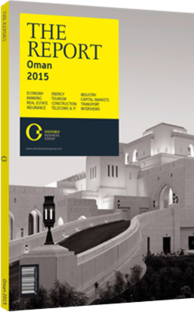Telecommunications
Omantel is the largest telecoms operator in Oman, with a total subscriber base of 4.17m and market share of 59% as of June 2014. The company had a monopoly over the Omani telecoms sector until 2005, when Ooredoo Oman (then Nawras) came into the market as the second operator to offer mobile and fixed services.
As of 2013, the government of Oman held 70% of the company; however, after selling 19% to the public in a secondary offering in April 2014, it is now left with 51%. Omantel’s subsidiary companies are WorldCall Telecom in Pakistan, of which Omantel owns 56.8%, and Oman Data Park, with a 60% stake.
Omantel recently had a change in management, with the board of directors announcing the appointment of Talal Said Marhoon Al Mamari as new CEO, effective June 2014, replacing Amer Awadh Al Rawas, who decided to move to the oil and gas sector as CEO of one of the companies involved in the enhancement of oil production. Prior to his appointment Al Mamari held the position of CFO at Omantel and played an instrumental role in the company’s initial public offering (IPO) in 2005. He also led the process of Omantel’s credit rating by Moody’s (A3) and Standard & Poor’s (BBB+/A2).
The telecoms sector in Oman has witnessed increased competition, which has put pressure on traditional telecoms services. A decline in revenue from services such as SMS has been offset by strong growth in broadband data in both the fixed and mobile services segments. As such, broadband data is considered a key growth driver for the telecoms sector, and Omantel has been deploying capital to expand the roll-out of its ADSL, 3G and 4G long-term evolution networks.
In addition to broadband data, Omantel expects its carrier-of-carriers business to be an important contributor to company growth. Omantel recently announced plans to invest $31m in the construction of a landing station for the Asia-Africa-Europe submarine cable network in Marseille, France, which will be the first such station operated by Omantel outside Oman. This investment underscores the strategy of diversifying away from traditional telecoms services and exploiting growth opportunities in its carrier-of-carriers business.
As part of the government of Oman’s strategy to divest its stake-holding in certain listed companies, the government offered 19% of Omantel’s share capital to the public in a two-phase divestment programme in 2014. Phase one came in the form of a private placement for institutional investors, which saw a very good response as it was nearly doubly oversubscribed at a cut-off price of OR1.511 ($3.91) per share. Phase two was a public offering in the form of an IPO, whereby only Omani individuals were allowed to apply, with a fixed and discounted share price of OR1.35 ($3.50).
Omantel’s share price witnessed an uptick in the first three quarters of 2014, reaching its highest level in five years. The strong performance of the stock can be attributed to several factors, including strong profit growth in the first half of 2014; the successful listing of Omantel shares in the secondary market; and the rally of the MSM 30 Index and other GCC stock markets. One of the most attractive features of Omantel shares for investors is their annual dividend. In 2013 Omantel paid out a combined 72% of its earnings in the form of dividends, with the current Omantel stock price offering a 6.6% dividend yield to shareholders.
In Oman’s highly penetrated and saturated telecoms market, shareholders of Omantel will take comfort in relying on the company’s reliable dividend paying capacity, thanks to strong cash flow generation from its wide subscriber base. Shareholders will look for signs of improvement in the performance of its subsidiary WorldCall Telecom, which has performed poorly since its acquisition by Omantel in 2008.
Additionally, the average revenue per user has been declining over the past couple of years, which has caused a slowdown in revenue growth. However, shareholder confidence will be buoyed by continued expansion of Omantel’s broadband data services segment and its carrier-of-carriers business. Shareholders will look to these segments to offset stagnation in other areas.
You have reached the limit of premium articles you can view for free.
Choose from the options below to purchase print or digital editions of our Reports. You can also purchase a website subscription giving you unlimited access to all of our Reports online for 12 months.
If you have already purchased this Report or have a website subscription, please login to continue.

